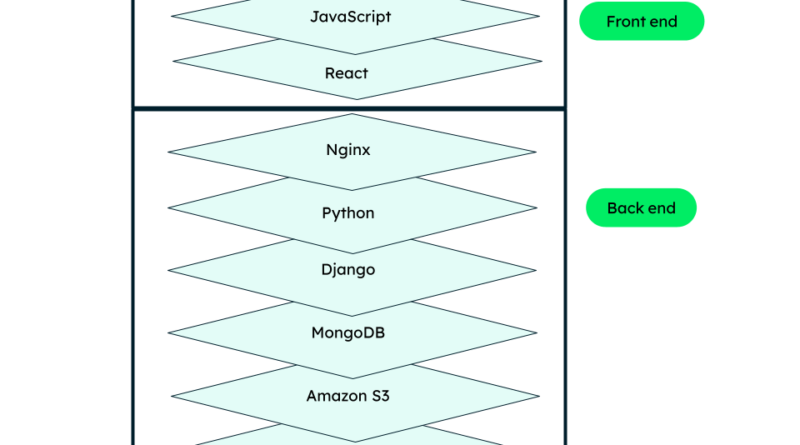Tech Stack
In the fast-paced world of technology, businesses rely heavily on their tech stack to drive innovation, streamline operations, and deliver exceptional user experiences. A tech stack encompasses all the tools, frameworks, programming languages, libraries, and services used to develop and operate a software application or a digital platform. From startups to multinational corporations, understanding and optimizing the tech stack is crucial for staying competitive in today’s digital landscape.
Evolution of Tech Stacks:
Tech stacks have evolved significantly over the years, adapting to changing demands, trends, and advancements in technology. Traditionally, tech stacks were monolithic, comprising a single programming language, database, and server infrastructure. However, with the rise of cloud computing, microservices architecture, and DevOps practices, modern tech stacks have become more diverse and complex.
Today, a typical tech stack often includes multiple layers, each serving a specific purpose in the software development lifecycle. These layers may include:
- Presentation Layer: This layer focuses on the user interface and experience. It includes front-end technologies such as HTML, CSS, and JavaScript frameworks like React, Angular, or Vue.js.
- Application Layer: The application layer contains the business logic and server-side components responsible for processing requests and generating responses. It often involves programming languages like Java, Python, Ruby, or Node.js, along with frameworks like Spring Boot, Django, or Express.js.
- Data Layer: Data storage and management are essential components of any tech stack. The data layer includes databases (SQL or NoSQL) like MySQL, PostgreSQL, MongoDB, or Redis, as well as data warehouses and caching systems.
- Infrastructure Layer: Infrastructure components, including servers, virtual machines, containers, and cloud services, form the backbone of the tech stack. Popular choices include AWS, Azure, Google Cloud Platform, Docker, Kubernetes, and Terraform.
Choosing the Right Tech Stack:
Selecting the right tech stack is a critical decision that can significantly impact the success of a project. Factors such as project requirements, scalability, performance, security, and team expertise must be carefully considered. Here are some key considerations when choosing a tech stack:
- Project Requirements: Understand the specific needs and goals of your project. Consider factors such as expected traffic, data volume, real-time processing requirements, and integration with third-party services.
- Scalability: Choose technologies that can scale with your business. Scalability is crucial for handling growth and sudden spikes in user activity. Cloud-native technologies and microservices architectures are often preferred for their scalability benefits.
- Performance: Optimize for performance to ensure fast response times and smooth user experiences. This may involve selecting efficient programming languages, optimizing database queries, and leveraging caching mechanisms.
- Security: Prioritize security at every layer of the tech stack. Choose tools and frameworks with robust security features, conduct regular security audits, and follow best practices for data protection and access control.
- Community Support: Consider the size and activity of the developer community around the technologies you choose. A vibrant community can provide valuable resources, documentation, and support to overcome challenges and stay updated with the latest trends.
- Team Expertise: Assess the skills and expertise of your development team. Choose technologies that align with their strengths and experience to facilitate smoother development and maintenance processes.
Common Tech Stack Combinations:
While there is no one-size-fits-all solution, certain tech stack combinations have gained popularity across different industries and use cases:
- MEAN/MERN Stack: MongoDB, Express.js, Angular/React, and Node.js are commonly used together for building full-stack JavaScript applications. These stacks offer a unified language (JavaScript) throughout the development process, facilitating faster development and code reuse.
- LAMP Stack: Linux, Apache, MySQL, and PHP form the foundation of many web applications and content management systems. LAMP stacks are known for their simplicity, affordability, and wide support within the open-source community.
- JAMstack: JAMstack (JavaScript, APIs, and Markup) is a modern approach to web development that emphasizes static site generation, serverless architectures, and client-side JavaScript. Popular JAMstack tools include Gatsby.js, Next.js, Netlify, and Vercel.
- Serverless Stack: Serverless architectures, powered by platforms like AWS Lambda, Azure Functions, and Google Cloud Functions, enable developers to build and deploy applications without managing servers. Serverless stacks offer scalability, cost efficiency, and faster time-to-market.
Challenges and Future Trends:
Despite the benefits, building and maintaining a tech stack presents several challenges, including compatibility issues, vendor lock-in, and the need for continuous updates and optimizations. Additionally, as technology continues to evolve, staying ahead of emerging trends and adopting new tools and practices is essential for remaining competitive.
Looking ahead, several trends are shaping the future of tech stacks:
- AI and Machine Learning: Integration of AI and machine learning capabilities into tech stacks to enable intelligent automation, personalized recommendations, and predictive analytics.
- Edge Computing: Leveraging edge computing technologies to process data closer to the source, reducing latency and improving performance for real-time applications.
- Blockchain and Decentralization: Integration of blockchain technology for secure and transparent data management, particularly in industries like finance, healthcare, and supply chain management.
- Low-Code/No-Code Development: Adoption of low-code and no-code development platforms to empower citizen developers and accelerate application development without extensive programming knowledge.
Conclusion
The tech stack serves as the foundation of digital innovation, powering everything from websites and mobile apps to enterprise systems and IoT devices. By carefully selecting and optimizing the components of their tech stack, businesses can unlock new opportunities, enhance productivity, and deliver value to their customers in today’s rapidly evolving digital economy.
